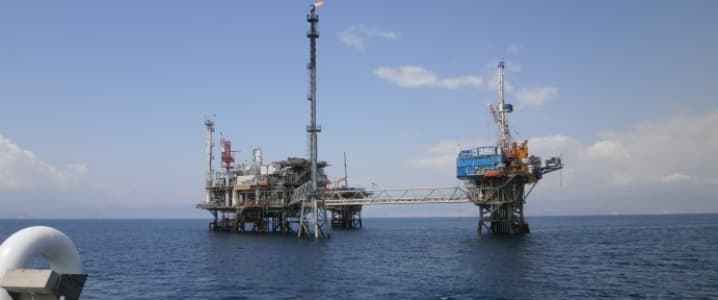Oil prices rose on Thursday and Friday after booking some midweek losses as a result of exceptionally strong builds to U.S. crude inventories
(Click to enlarge)
Friday, February 10, 2017
Oil prices faltered midweek on growing concerns of oversupply, but rallied on Wednesday after the EIA reported a surprise drawdown in gasoline inventories. The latest data indicated that U.S. gasoline demand was not as weak as previously thought, and it was enough to overcome investors’ worries regarding the large increase in crude oil inventories. WTI and Brent are set to close out the week roughly where they started – around $54 and $56 per barrel, respectively.
OPEC officials suggest deal needs to be extended. The combined OPEC cuts of 1.2 million barrels per day (mb/d) plus the additional 0.6 mb/d from non-OPEC countries is helping to erase the supply overhang in the oil market. But the oil ministers of Iran and Qatar said this week that OPEC’s work would be undone if the deal was allowed to expire in June. They suggested that the cuts might need to be extended until the end of the year if the oil market is to balance, a sign that the adjustment process is taking longer than anticipated.
IEA: OPEC cuts a success thus far. The IEA says that global oil production fell by 1.5 mb/d in January, largely because OPEC cut 1 mb/d as part of its deal. The Paris-based energy agency said that the cuts were some of the largest in OPEC’s history and the 90 percent compliance rate is a sign that the group is intent on carrying out the agreement. If OPEC maintains the cuts at current levels, the IEA says that global inventories could fall by 600,000 bpd through June. The IEA said it would take a “wait and see” approach, but the agency was largely optimistic in its latest monthly oil market report.
Trump administration backs down on China. After a conversation between President Donald Trump and Chinese President Xi Jingping, the White House reaffirmed its support of the “One China” policy, a longstanding position of the U.S. government. The move will calm tensions between the two countries, which had been ruffled when then President-elect Donald Trump appeared to consider recognition of Taiwan a few months ago, raising the prospect of conflict between the U.S. and China. The latest conversation could smooth over tensions, and reduce the chances of a trade war between the two largest economies in the world.
Venezuela behind on deals with Russia and China. Venezuela’s state-owned oil company PDVSA has “fallen months behind on shipments and fuel under oil-for-loan deals with China and Russia,” according to a new Reuters report. Russia and China are key benefactors of Venezuela, keeping it afloat during the worst economic crisis in recent memory. But Russia and China are also on the hook for a combined $55 billion to Venezuela, and needs to keep the oil flowing in order to recoup payment. Reuters says that PDVSA is behind by about $750 million in oil, which speaks to the depths of the crisis that Venezuela finds itself in.
Renewables take over almost entire market in Europe last year. About 90 percent of new electricity capacity in Europe in 2016 came from renewable sources. An estimated 21.1 out of 24.5 gigawatts of new capacity came from wind, solar biomass and hydro, according to new data. Wind alone accounted for more than half of that total. Renewables are dominating new capacity additions in Europe but proponents worry about the policy environment beyond 2020 when binding requirements expire. Related: Nigeria Rescues Oil Tanker From High-Seas Pirates
Wall Street jumping back into oil and gas. Bloomberg reports that Wall Street is funneling the largest amount of capital back into the oil and gas sector since at least 2000. Energy companies issued 13 new rounds of equity in January, raising $6.64 billion in capital, a large volume and a sign that investors are hungry for energy exposure. In a separate report, Moody’s Investors Service predicted that M&A deals would rise substantially in 2017.
Total SA boosts dividend. Improving cash flow has shored up the dividend payouts for most of the oil majors but Total (NYSE: TOT) has gone a step further by increasing its shareholder payout. Total will raise its dividend by 1.6 percent and it has also given the greenlight to nearly a dozen projects over the next 18 months after reporting the best fourth quarter results amongst its peers. “We’re going to propose to increase the dividend as we have confidence in the future,” CEO Patrick Pouyanne told reporters. “My goal is to launch new projects to prepare the future, while remaining disciplined and cutting costs further because crude prices might drift lower.”
ADVERTISEMENT
IHS: U.S. shale to add 500,000 bpd this year. Famed oil historian and vice chairman of IHS Markit Daniel Yergin told CNBC that the U.S. could add 500,000 bpd by the end of the year. He argues that at today’s prices many U.S. drillers are already in profitable territory. The figure compares to the 320,000 bpd increase predicted by the IEA. "A dollar invested in 2017 produces about two and a half times as much oil as a dollar invested in 2014, so I think even at these lower prices we're going to see this recovery," Yergin said.
Dakota Access construction begins. Energy Transfer Partners (NYSE: ETP) said that it has resumed construction on the $3.8 billion Dakota Access Pipeline after receiving the final easement needed to drill beneath the Missouri River. The company expects the pipeline to come online in the second quarter, and it will connect North Dakota crude oil to the Gulf Coast.
By Evan Kelly of Oilprice.com
More Top Reads from Oilprice.com:
More Top Reads From Oilprice.com:
- Permian Drilling Costs Surge: Are The Days Of Cheap Oilfield Services Over?
- Oil Prices Head Higher On Positive Demand Outlook
- Oil Prices Rise As OPEC Compliance To Cuts Hits 90%

























